UAW strike of Big Three auto manufacturers expands
The United Auto Workers expanded a strike against three large auto manufacturers — General Motors, Ford and Stellantis (Chrysler) — with auto parts makers in Milwaukee and Hudson joining the action.
By Marisa Wojcik | Here & Now
September 29, 2023 • West Central Region
The United Auto Workers union expanded the nationwide picket line against three of the country’s largest car and truck manufacturers.
UAW members first walked off the job to strike General Motors, Ford and Chrysler parent company Stellantis on Sept. 15. One week later, auto parts makers joined them – including two Wisconsin plants in Milwaukee and Hudson.
“Nobody’s ever done this in the history of the UAW — put all three out,” said Joe Neu, president of UAW Local 75, which represents workers at a Chrysler parts distribution center in Milwaukee.
In weekly waves, auto workers are joining the picket line — striking the country’s three car manufacturing giants.
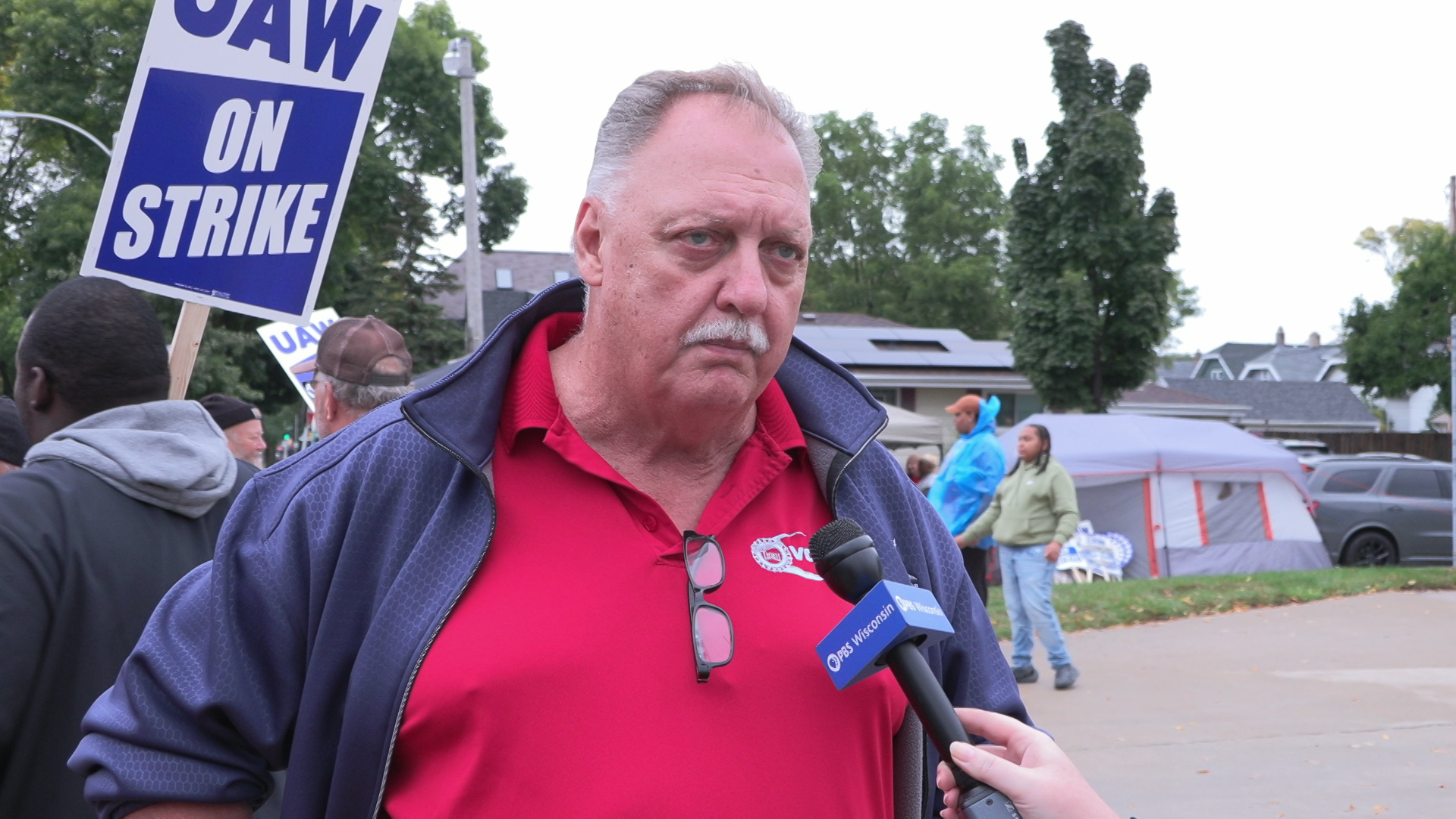
UAW Local 75 President Joe Neu participates in a picket line outside a Chrysler parts distribution center in Milwaukee on Sept. 27, 2023. Neu notes the scope of a UAW strike of the Big Three auto manufacturers, and emphasized the contribution of workers to these businesses. (Credit: PBS Wisconsin)
“Notified my members that morning at approximately 9 that. get ready to go, and we will be walking out at 11 — and that’s what we did,” said Steve Frisque, president of UAW Local 722 at a GM plant in Hudson.
Its members, who voted 97% in favor to strike, were in solidarity with about 18,000 other workers on the nationwide picket line with the intention of renegotiating about 146,000 contracts.
For members, the purpose is simple.
“Striking for our rights,” said one worker on the picket line.
One major demand is a 36% wage increase and cost-of-living adjustments.
“I actually make less money today than I did when I hired in General Motors in 1986,” Frisque said.
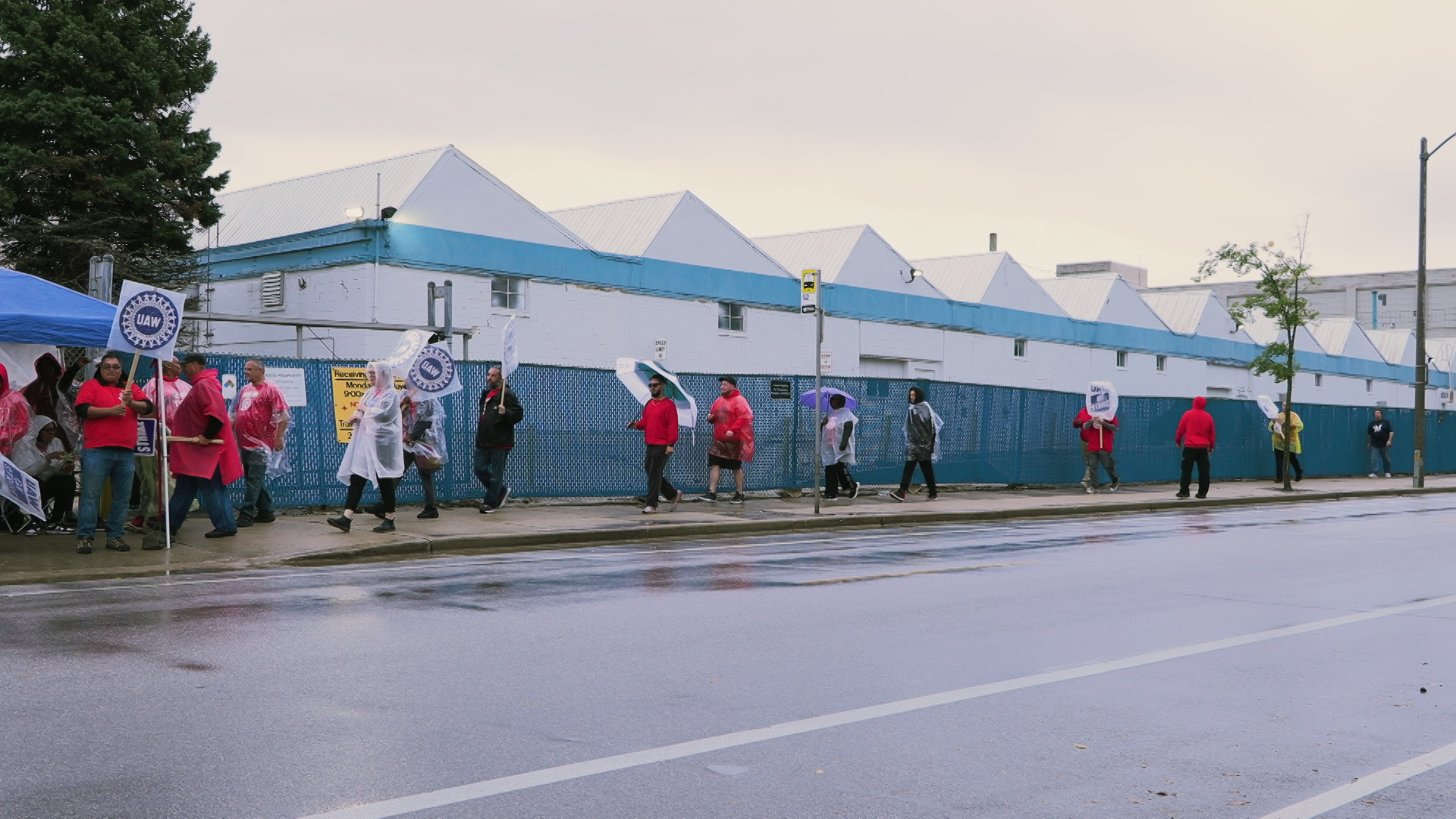
UAW Local 75 members picket outside a Chrysler parts distribution center in Milwaukee on Sept. 27, 2023. The union local joined a national strike by the United Auto Workers on Sept. 22. (Credit: PBS Wisconsin)
Depressed wages hit workers hard amidst soaring inflation.
“A lot of them either have to work the overtime and a lot of them have second jobs because they just — they can’t survive on that amount of money,” he noted.
Another primary demand is an end to the two-tier system, which pays older workers differently from new hires.
“They could start people at lower wages and they would never actually ever get full wage like the legacy employees did,” said Frisque. “I think more than anything, it’s dividing the workforce and it has caused animosity between workers.”
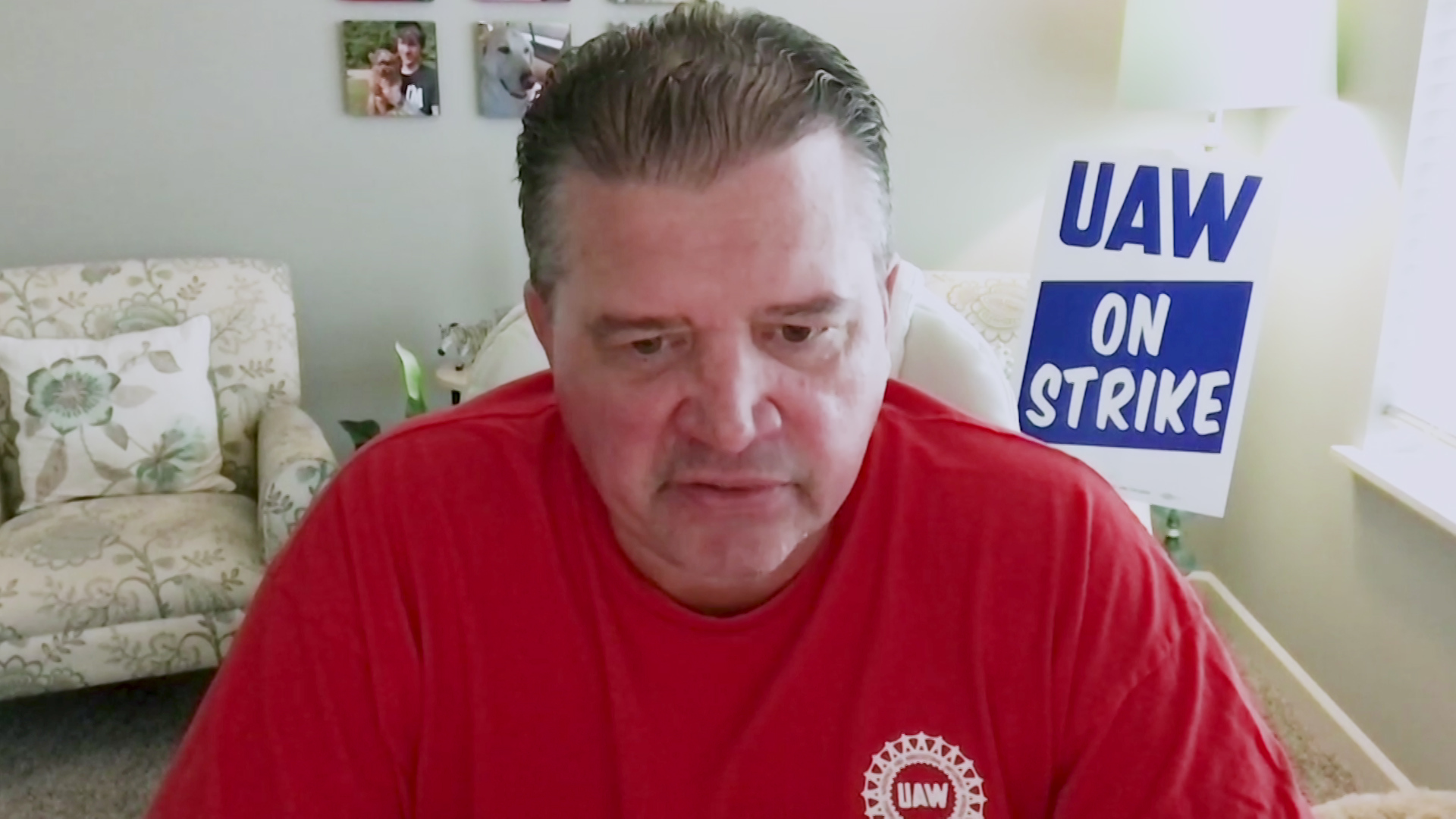
Steve Frisque, president of UAW Local 722 at a General Motors parts manufacturer in Hudson, gives an online video interview on Sept. 28, 2023. The local joined a nationwide United Auto Workers strike on Sept. 22, and Frisque explained how raising pay levels is at the heart of the union’s demands. (Credit: PBS Wisconsin)
The union says how they got here dates back to 2009, when Ford, Chrysler and General Motors faced bankruptcy following the country’s financial crash. A federal bailout saved them from complete collapse.
“One of the conditions of that bailout bill was that the union had to reopen the contract and sacrifice a lot of things that we had negotiated,” Frisque said. “Now that these companies are making, the three of them have made a quarter of a trillion dollars the last 10 years in profits.”
“It has to come back around. We gave when they were bankrupt, when they were folded, going down the tubes — we gave. Now it’s time to give a little bit of that back. That’s all we ask,” said Doug Frump, who is vice president of UAW Local 75.
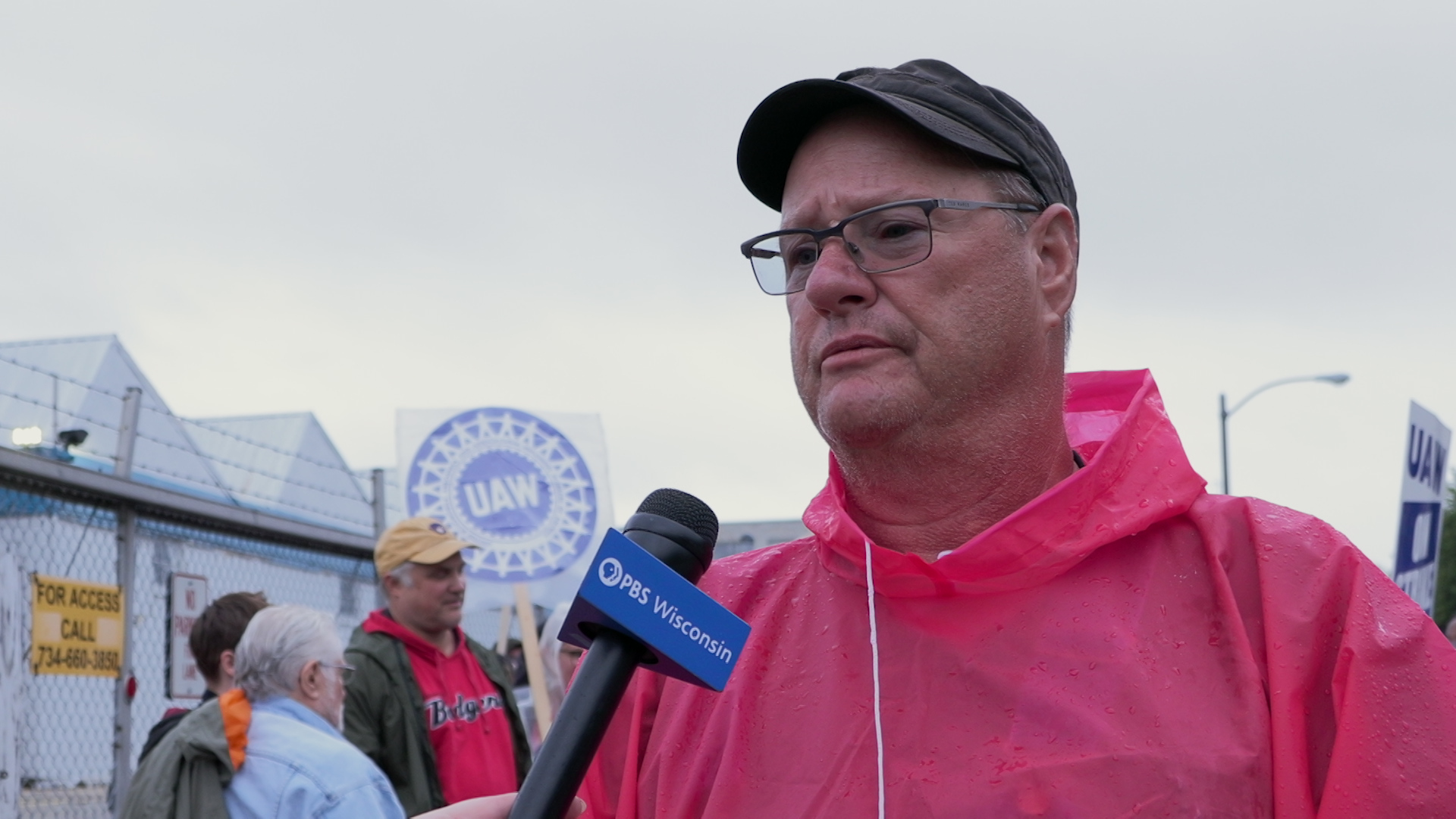
Doug Frump, vice president of UAW Local 75 at a Chrysler parts distribution center in Milwaukee, participates in a picket line outside the facility on Sept. 27, 2023. Frump points to concessions made by the union as part of a federal bailout of auto manufacturers in 2009, and said it’s time for workers to receive consideration. (Credit: PBS Wisconsin)
“We produce millions of dollars in profits per month out of here,” said Neu, whose workplace is now at risk of closure. “Any time you’re on a chopping block, you’ve got to watch.”
A common theme among these union veterans is fighting for the next generation.
“I’m fighting for these young people with young families,” Frump said.
“That’s what we’re doing — bringing these younger kids up to learn how to do these things, so that when we’re gone, they can take over,” Frisque said.
- UAW Local 75 members march in a picket line outside a Chrysler parts distribution center in Milwaukee on Sept. 27, 2023. One major demand of a nationwide United Auto Workers strike is a 36% wage increase along with subsequent cost-of-living adjustments. (Credit: PBS Wisconsin)
- UAW Local 75 members rally outside a Chrysler parts distribution center in Milwaukee on Sept. 27, 2023. A primary demand of a nationwide United Auto Workers strike is an end to the two-tier system, which pays older workers differently from new hires. (Credit: PBS Wisconsin)
While negotiations have been ongoing, an end doesn’t appear to be in sight as the union expanded strikes to 25,000 people on Sept. 29.
“You’re seeing a lot of people organizing now,” Frisque said. “People are tired of it and they’re fighting back. And that’s a good thing because we needed that to happen in this country.”
If it wasn’t for the union, you wouldn’t have 40-hour work weeks. You wouldn’t have paid holidays. You wouldn’t have eight-hour work days,” said Frump. “The union fights for everybody, whether they know it or not, because what we do drives the community. It drives the area.”
 Passport
Passport




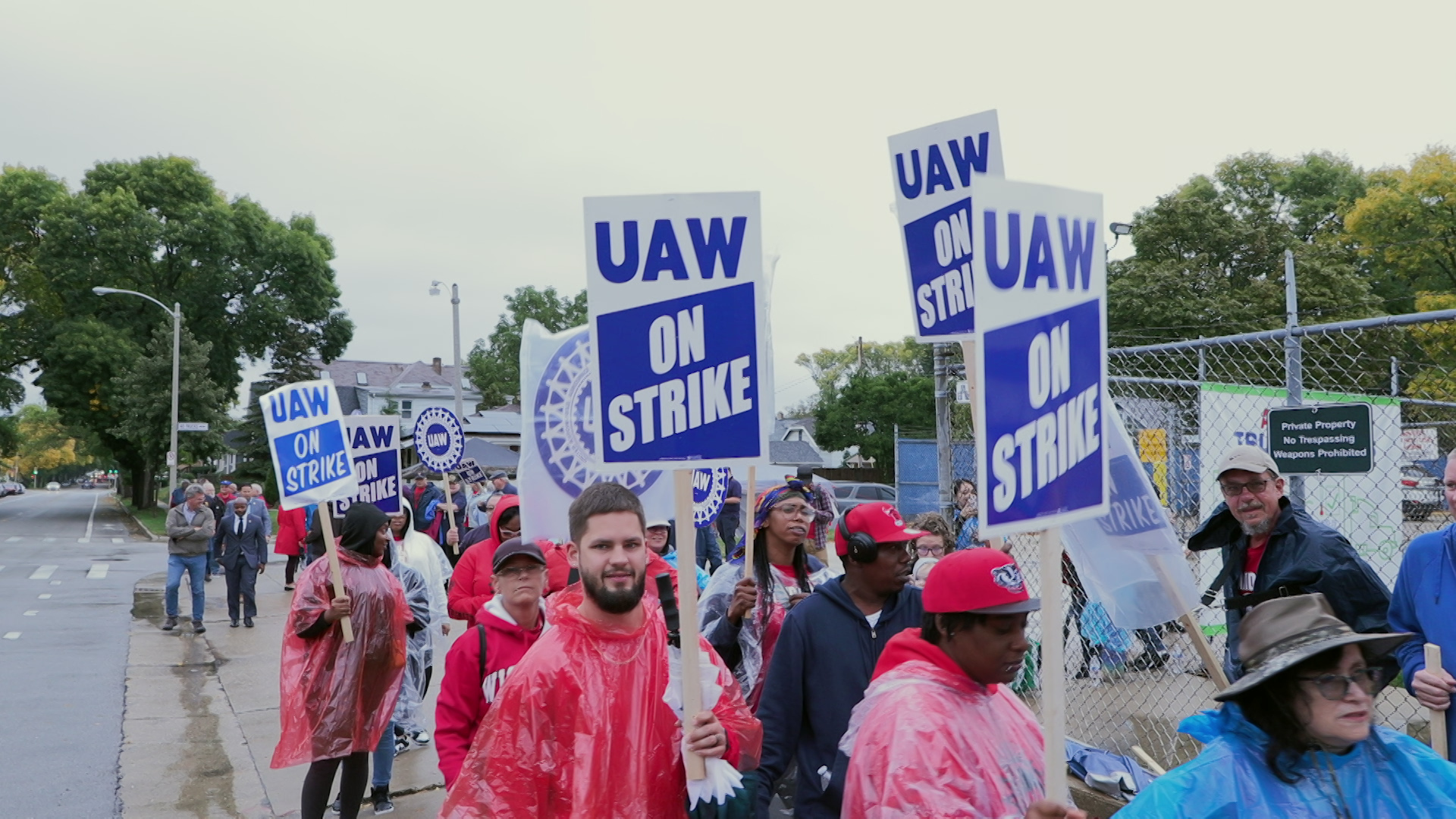
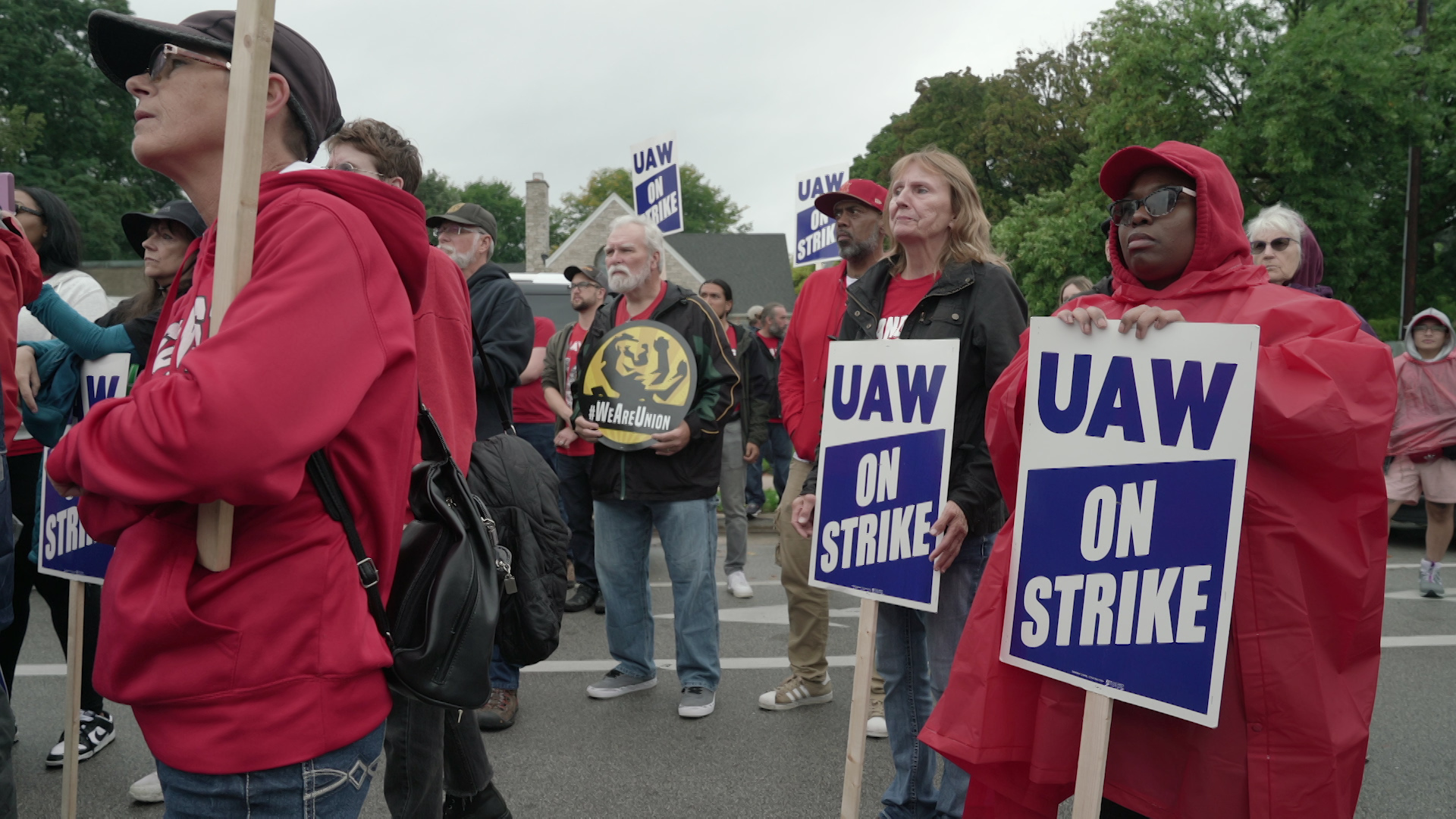
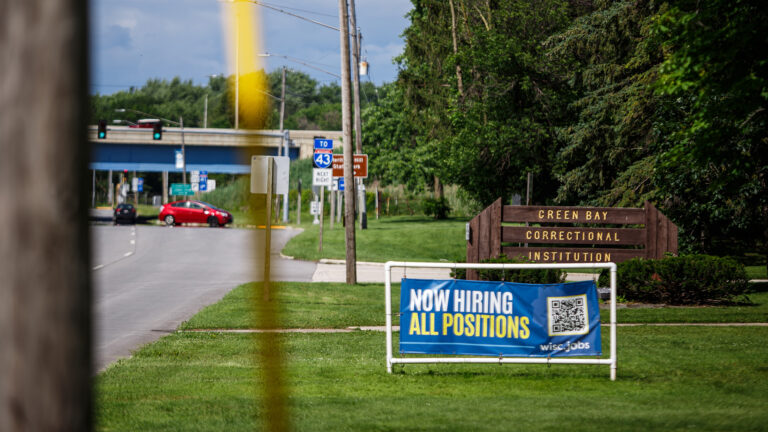
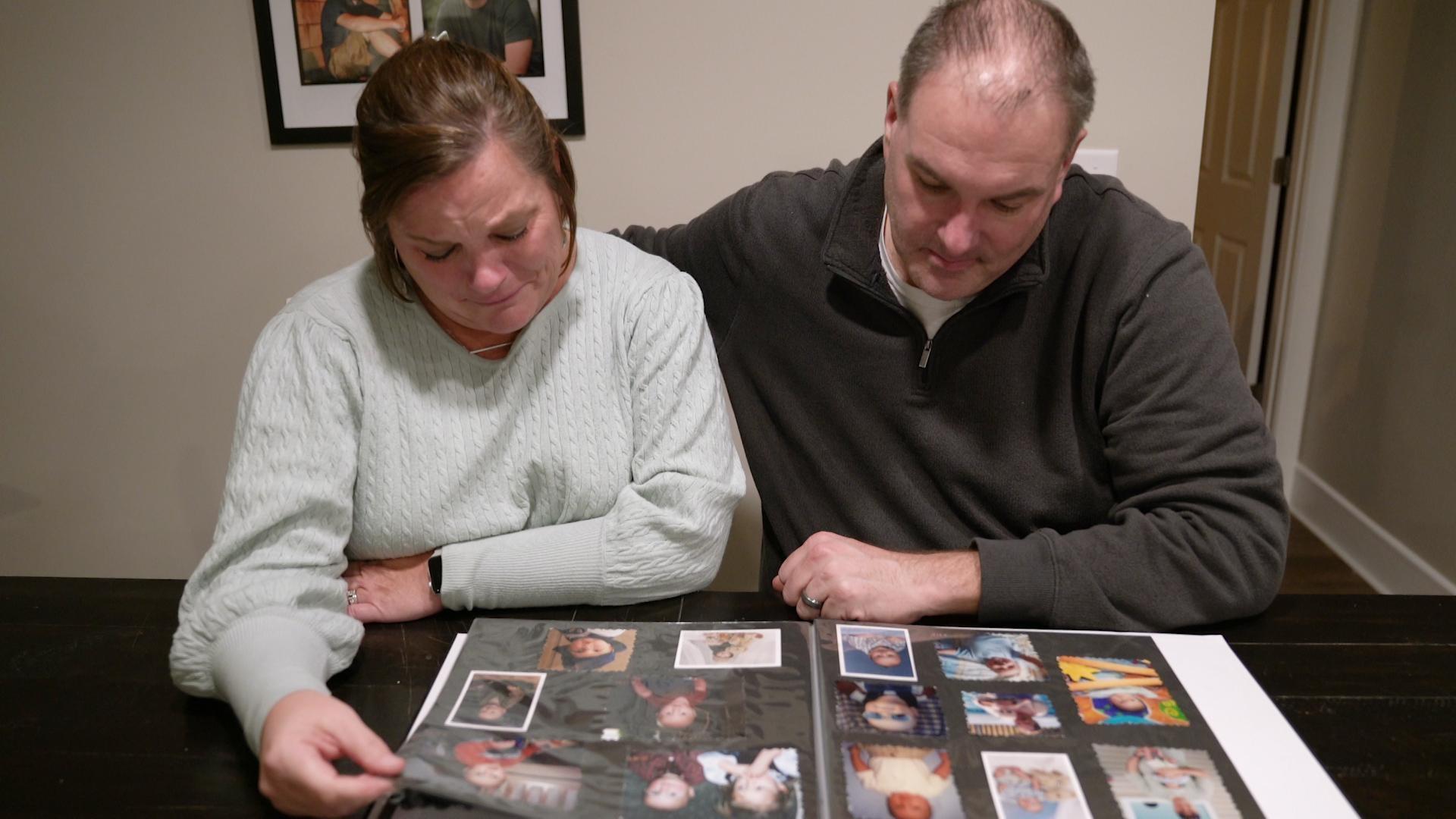
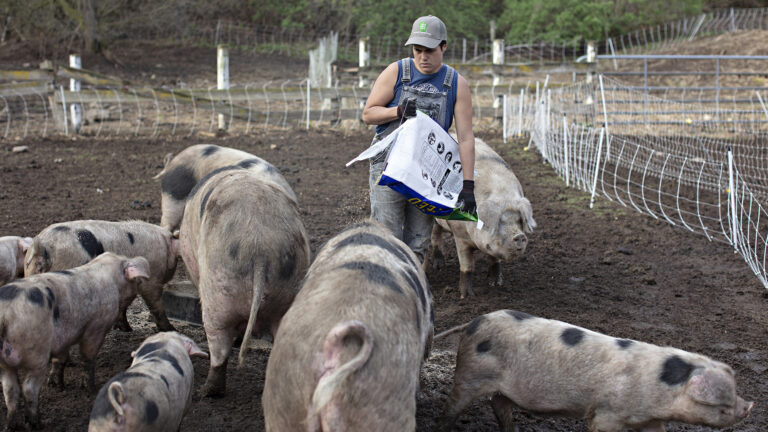
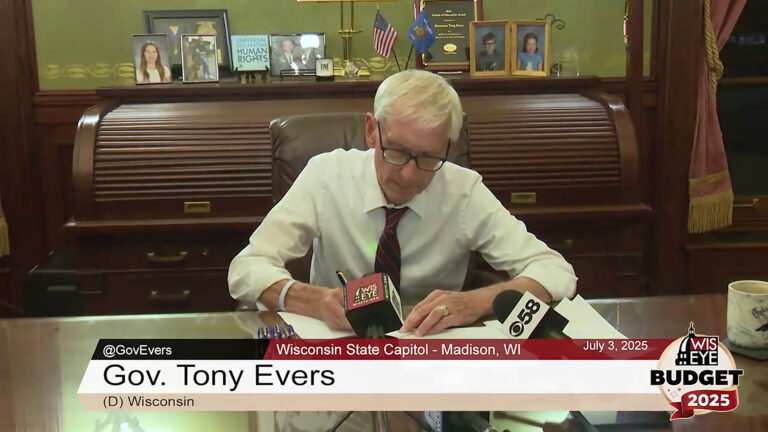

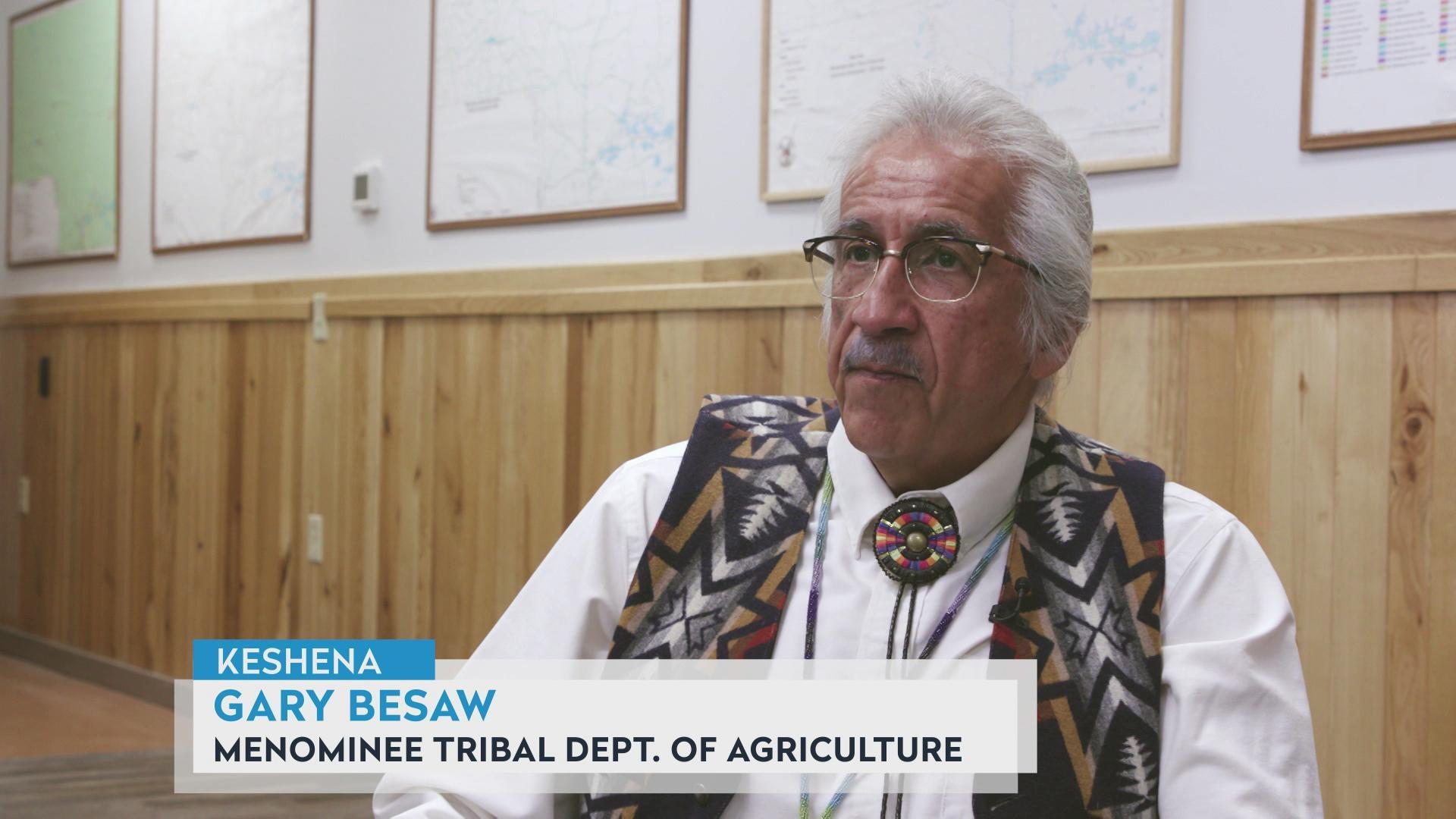

Follow Us